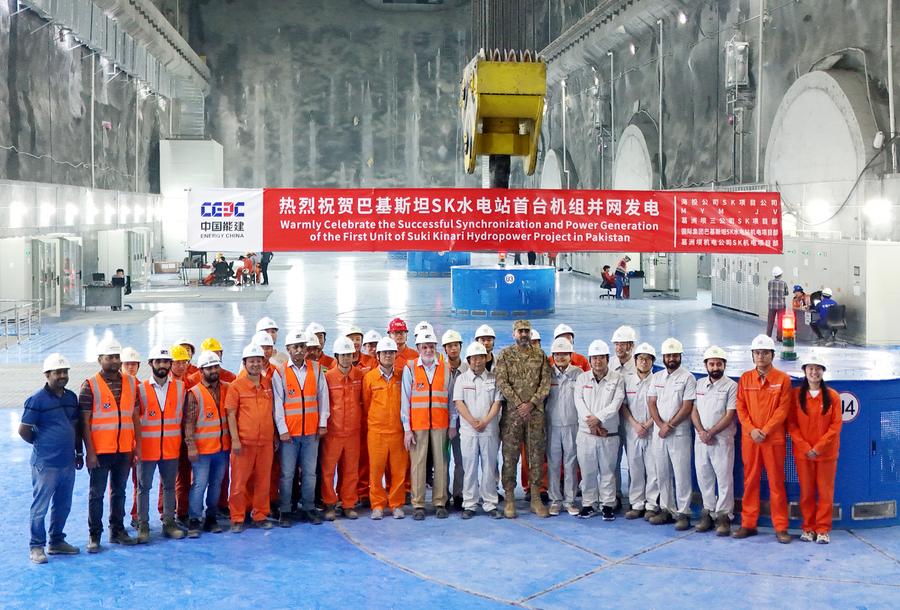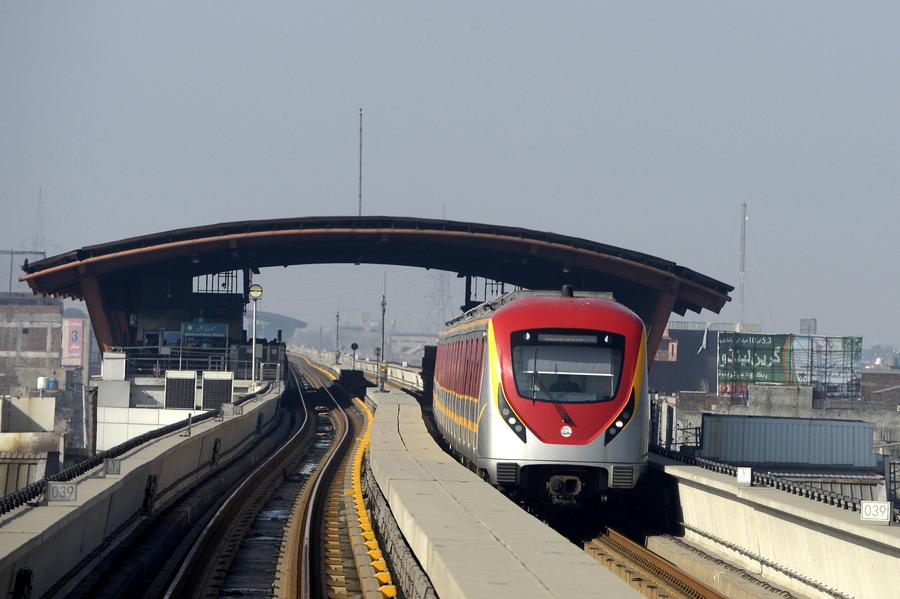CPEC's benefits for Pakistan's infrastructure, economy far exceed malicious "debt trap" claims: experts

Chinese and Pakistani engineers celebrate the connecting of the first unit of the Chinese-built Suki Kinari Hydropower project to the grid for power generation in northwest Pakistan's Mansehra on Aug. 12, 2024. (China Energy Construction Overseas Investment Co., Ltd./Handout via Xinhua)
CPEC is beacon of hope for Pakistan and game changer for its economy, so it is the utmost responsibility of the media and state to counter propaganda against it, said Talat Shabbir from the Islamabad-based think tank Institute of Strategic Studies.
by Misbah Saba Malik
ISLAMABAD, Sept. 4 (Xinhua) -- Loans taken from China under the China-Pakistan Economic Corridor (CPEC) have significantly benefited Pakistan as they helped build and transform the country's infrastructure and created jobs and business opportunities for the public, Pakistani experts have said.
Addressing a seminar titled "Narratives building on the CPEC and Role of Media" hosted by an Islamabad-based thinktank Institute of Regional Studies, the experts said that labeling CPEC as a debt trap is misguided, emphasizing that unlike Western loans, CPEC has advanced Pakistan's economic development under more favorable terms.
Addressing the event, Jauhar Saleem, the president of the think tank, said that when CPEC was launched in 2013, it was understood that the initiative would involve new loans, as this development model is widely used globally.
He emphasized the need to showcase CPEC's contributions to Pakistan's economy to counter the negative propaganda of the West and urged the media to perform its twin roles of informing and educating by adopting an objective and constructive approach.

A plane parks after completing its flight test at the China-aided New Gwadar International Airport in the southwest port city of Gwadar, Pakistan, June 4, 2024. (China-aided New Gwadar International Airport Project Management Team/Handout via Xinhua)
Speaking at the event, Tahir Mumtaz Awan, an analyst on China, currently working as a professor at the COMSATS University Islamabad, said that CPEC has brought development through infrastructure development across Pakistan.
Talking about the double standards of the West for focusing on Chinese loans to disparage CPEC while ignoring the larger issue of Western debt, the professor stated that the debt from China is "a drop in the bucket" compared to the substantial Western debt that is burdening Pakistan, forcing it to take on new loans to repay old ones.
"It is appalling that the countries with the highest carbon emissions criticize the environmental impact of CPEC projects, which have very low emissions, while those burdening Pakistan with massive debt label CPEC as a debt trap," he added.
He said that the Pakistani government always rebuts the negative propaganda by presenting facts and figures, urging that the Pakistani media should also play its part in countering the negative propaganda against the development of Pakistan.
In his comments, Talat Shabbir, director of the China-Pakistan Study Center at the Islamabad-based think tank, the Institute of Strategic Studies, said that CPEC is the beacon of hope for Pakistan and a game changer for the country's economy, so it is the utmost responsibility of the media and the state to counter propaganda against it.
The event was well attended by a diverse audience, including national and international media personnel, diplomats, academics, researchers and university students.

An Orange Line Metro Train (OLMT) arrives at a station in Lahore, Pakistan, Feb. 2, 2024. (Xinhua/Ahmad Kamal)
The attendees engaged in lively discussions and exchanged insights on the impact of CPEC, reflecting a broad spectrum of perspectives on its economic and developmental significance.
Launched in 2013, the CPEC, a flagship project of the China-proposed Belt and Road Initiative, is a corridor linking the Gwadar Port in southwest Pakistan's Balochistan province with Kashgar in northwest China's Xinjiang Uygur Autonomous Region, which highlights energy, transport, and industrial cooperation in the first phase, while the new phase expands to fields of agriculture and livelihood, among others.


